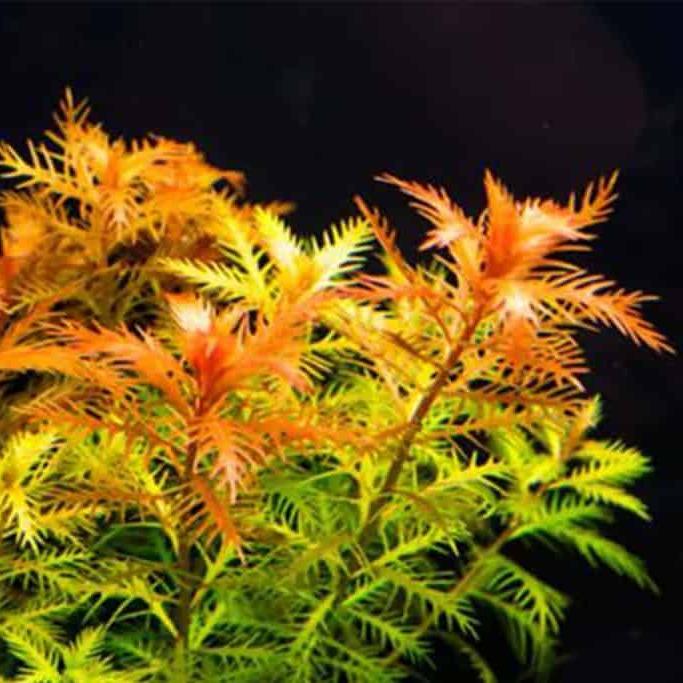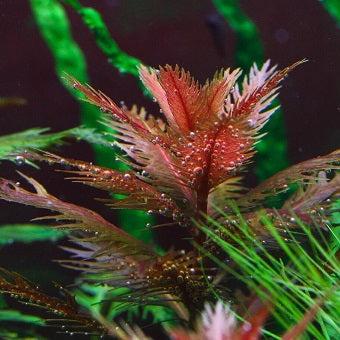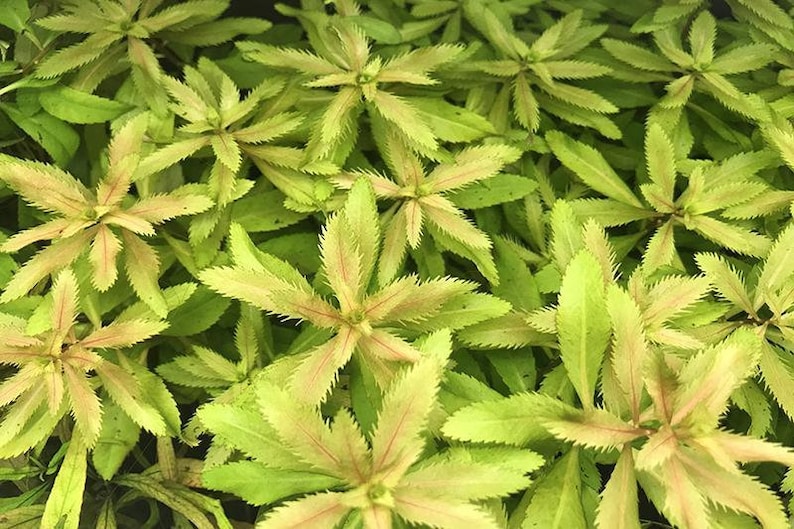🌿 Product Description
Mermaid Weed (Proserpinaca palustris) is a captivating aquatic plant renowned for its finely serrated, feathery leaves that transition from bright green to reddish-orange under optimal conditions. Native to the Americas, this versatile plant thrives both submerged and emersed, making it an excellent choice for aquariums, ponds, and wetland gardens. Its unique texture and vibrant coloration add depth and visual interest to any aquascape.
✨ Key Features
-
Dynamic Coloration: Leaves shift from green to coppery-red with increased light intensity.
-
Distinctive Foliage: Serrated, needle-like leaves provide a unique texture.
-
Versatile Growth: Adapts to both submerged and emersed environments.
-
Moderate Maintenance: Suitable for aquarists with some experience.
-
Aquascaping Appeal: Ideal for midground placement, creating a striking focal point.
📋 Product Specifications
-
Scientific Name: Proserpinaca palustris
-
Common Name: Mermaid Weed
-
Plant Type: Stem
-
Placement: Midground
-
Growth Rate: Medium
-
Height: 10–40 cm (4–16 inches)
-
Light Requirement: Moderate to High
-
CO₂ Requirement: Recommended
-
Optimal Temperature: 15–28°C (59–82°F)
-
pH Range: 6.0–7.5
-
Water Hardness: Soft to moderately hard
-
Substrate: Fine gravel or nutrient-rich soil
-
Propagation: Stem cuttings
❓ Frequently Asked Questions (FAQ)
Q1: Is Mermaid Weed suitable for beginners?
A1: While it requires moderate care, including adequate lighting and CO₂ supplementation, dedicated beginners can successfully cultivate it.
Q2: How can I enhance the red coloration of Mermaid Weed?
A2: Providing intense lighting and maintaining appropriate nutrient levels, particularly nitrates and phosphates, will promote vibrant red hues.
Q3: Can Mermaid Weed grow without CO₂ injection?
A3: Yes, but CO₂ supplementation encourages healthier growth and more vivid coloration.
Q4: How do I propagate Mermaid Weed?
A4: Trim healthy stems and replant them into the substrate; they will develop roots and continue growing.
Q5: What causes the leaves to lose their color?
A5: Insufficient lighting or nutrient deficiencies can lead to faded coloration. Ensure optimal conditions to maintain its vibrant appearance.





![Broadleaf Chain Sword [Echinodorus Quadricostatus]](https://www.terrariumwolf.com/wp-content/uploads/2025/03/il_794xN.4269974735_j5hd-300x300.jpg)
![Green Cabomba [Cabomba Caroliniana]](https://www.terrariumwolf.com/wp-content/uploads/2025/03/cambomba-scaled-1-300x300.webp)
![Brazilian Pennywort [Hydrocotyle Leucocephala]](https://www.terrariumwolf.com/wp-content/uploads/2025/03/il_794xN.2707657185_ckxu-300x300.jpg)
![Bacopa Caroliniana [Lemon Bacopa] 4-5 stems](https://www.terrariumwolf.com/wp-content/uploads/2025/03/71iwByCAdbL-300x300.jpg)